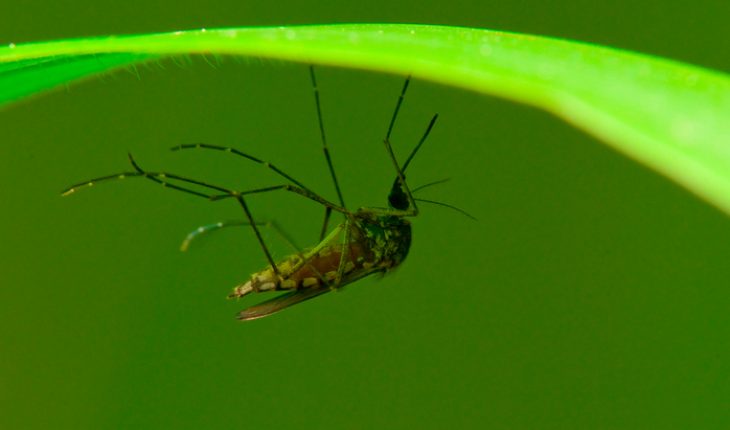Climate itself is a basic determinant of the distribution of malaria in the world. As the US Centers for Disease Control and Prevention (CDC) explains, “Climate can influence all three components of the life cycle. It is thus a key determinant in the geographic distribution and the seasonality of malaria.”[1] Thus for anopheles mosquitoes there needs to be adequate rainfall to create stable breeding sites that will neither dry up nor be washed away for a 9-12 day period. Then survival of the malaria parasite within the adult mosquito requires ambient temperatures of 15C and higher for P. vivax and 20C and higher for P. falciparum. Finally CDC notes that higher temperatures may encourage humans to sleep outdoors and/or unprotected due to comfort or work out in the fields. Even if malaria has been eliminated from an area, if these rainfall, humidity and temperature conditions persist, there is danger that the disease can be reintroduced.
Scientists and public health officials have noticed for a number of years, as Olsen and colleagues point out that, “Climate changes are altering patterns of temperature and precipitation, potentially affecting regions of malaria transmission.” [2] The World Health Organization posits that, “Between 2030 and 2050, climate change is expected to cause approximately 250 000 additional deaths per year, from malnutrition, malaria, diarrhoea and heat stress.”[3] Furthermore WHO points out that with excess rainfall in some areas as a result of change, “Floods contaminate freshwater supplies, heighten the risk of water-borne diseases, and create breeding grounds for disease-carrying insects such as mosquitoes.”
Ngarakana-Gwasira and co-researchers developed a transmission model as a framework for understanding the impact of temperature and rainfall on malaria dynamics.[4] They identified areas where there could be a dying out of malaria due to drying conditions, such as in southern Africa, and an increase in malaria in area of higher elevation as temperatures increase. These findings not only compel us to monitor climate conditions and parasite levels, but to use the information to plan appropriate interventions that change with realities on the ground.
Likewise, modeling efforts by Leedale and co-researchers found that, “dynamical and spatially explicit epidemiological malaria models response to future climate change is similar in terms of sign and spatial distribution, with malaria transmission moving to higher altitudes in the East African Community (EAC) region, while transmission reduces in lowland, marginal transmission zones such as South Sudan.” [5] Their climate model ensemble generally projects warmer and wetter conditions over EAC.
Land use patterns not only drive climate change, but in combination with climate change can alter the potential for malaria transmission in an environment. Overgrazing on one area might lead to desertification while deforestation for increasing agricultural land may lead to greater malaria transmission. Tompkins and Caporaso contrast the Sahel and Mozambique[6]. Increases in temperature in areas of land use conversion to farmland may result is a more intense transmission and longer transmission seasons in places like Mozambique. In contrast warming observed and modeled in the Sahel region reduces malaria risk as temperatures are already above the 25-30°C threshold at which transmission peaks.
Variations in changing malaria transmission across regions may be expected. What Imai et al. found in Papua New Guinea is that important variations in response to climate change occur within countries[7]. They suggest location-specific approaches to investigations and surveillance and also public health interventions. This is in keeping with the recently updated WHO guidance on malaria elimination that stresses stratification of malaria burden and transmission within countries[8].
These strata of higher or lower transmission may change, contract or expand with climate change. According to Escobar and colleagues, vectors of different diseases will respond differently to climate changes[9]. Their analysis in Ecuador revealed patterns that suggest the “vectors of arboviruses and leishmaniasis will experience geographic range reductions by 2100 under future climate conditions, while a malaria vector, An. Darling, was predicted to increase in the geographic range.
Currently normal climate variations in the Pacific and Indian Oceans affect malaria transmission in eastern and southern Africa. As climate change affects and intensifies these normal patterns, the effect in Africa will also be felt. Mabaso and co-researchers evaluated the association between annual malaria incidence and El Niño Southern Oscillation (ENSO) five countries in
Southern Africa from 1988 to 1999. Below normal incidence of malaria synchronised with a negative El Niño and above normal incidence with a positive La Niña, which lead to dry and wet weather conditions, respectively[10].
With extreme precipitation comes flooding. Boyce et al. “observed that extreme flooding resulted in an increase of approximately 30% in the risk of an individual having a positive result of a malaria diagnostic test in the post-flood period in villages bordering a flood-affected river, compared with villages farther from a river,” in the highlands of Uganda[11]. This too could have a relationship with the El Niño southern oscillation.
As noted above, a changing climate, even a warming climate, does not directly translate into greater malaria transmission. Lafferty and Mordecai explain that we need a need “a greater appreciation for the economic and environmental factors driving infectious diseases,” as these have their own impact on transmission[12]. Climate change effects occur in parallel to “changes such as land conversion, urbanization, species assemblages, host movement, and demography.” This wider ecological understanding is needed to “predict which diseases are most likely to emerge where, so that public health agencies can best direct limited disease control resources.”
As the WHO framework for malaria elimination stresses, “Most countries have diverse transmission intensity, and factors such as ecology, immunity, vector behaviour, social factors and health system characteristics influence both the diversity of transmission and the effectiveness of tools, intervention packages and strategies in each locality.” The Framework goes further to encourage strategic planning and interventions appropriate for the diverse settings or strata within a country. What climate change implies is that the nature of malaria transmission in these strata will change as temperature, rainfall, humidity and human response change. Countries not only need to adapt malaria activities to existing strata, but also be alert to changes in transmission and thus changes needed in strategies.
Increased or decreased vector control activities would be one example of changes that are needed in response to climate, vector habitat and transmission changes. “The receptivity of an area (to vector control interventions) is not static but is affected by determinants such as environmental and climate factors.” Case detection will become even more crucial as transmission drops and the success of elimination programs depends on identifying, tracing and responding to remaining cases promptly and accurately.
The landscape for malaria control and elimination is shifting in part because of the success of interventions since the dawn of Roll Bank Malaria in 1998. As we have shown here, there may also be shifts due to climate change. Of great concern is the shifts that expose new and more vulnerable populations, such as those in the East Africa highlands to the threat of malaria. National Malaria Programs need strong surveillance efforts that monitor disease, vectors and climate, and be ready to respond.
This article by William R Brieger was first published in Africa Health
References
[1] US Centers for Disease Control and Prevention. Ecology of Malaria. https://www.cdc.gov/malaria/about/biology/ecology.html accessed 20171015.
[2] Olson, S. H., Gangnon, R., Elguero, E., Durieux, L., Guégan, J., Foley, J. A….Patz, J. A. (2009). Links between Climate, Malaria, and Wetlands in the Amazon Basin. Emerging Infectious Diseases, 15(4), 659-662. https://dx.doi.org/10.3201/eid1504.080822.
[3] World Health Organization. Climate change and health. Fact sheet. Updated July 2017.
http://www.who.int/mediacentre/factsheets/fs266/en/
[4] Ngarakana-Gwasira ET, Bhunu CP, Masocha M, Mashonjowa E. Assessing the Role of Climate Change in Malaria Transmission in Africa. Malaria Research and Treatment. Volume 2016, Article ID 7104291, 7 pages. http://dx.doi.org/10.1155/2016/7104291
[5] Leedale J, Tompkins AM, Caminade C, Jones AE, Nikulin G, Mors AP. Projecting malaria hazard from climate change in eastern Africa using large ensembles to estimate uncertainty. Geospatial Health 2016; volume 11(s1):393
[6] Tompkins AM, Caporaso L. Assessment of malaria transmission changes in Africa, due to the climate impact of land use change using Coupled Model Intercomparison Project Phase 5 earth system models. Geospatial Health 2016; volume 11(s1):380
[7] Imai C, Cheong H, Kim H, Honda Y, Eum J, Kim CT, Kim JS, Kim Y, Behera SK, Hassan MN, Nealon J, Chung H, Hashizume M. Associations between malaria and local and global climate variability in five regions in Papua New Guinea. Tropical Medicine and Health (2016) 44:23. DOI 10.1186/s41182-016-0021-x
[8] Global Malaria Program. A framework for malaria elimination. World Health Organization 2017, ISBN 978-92-4-151198-8. http://www.who.int/malaria/publications/atoz/9789241511988/en/
[9] Escobar LE, Romero-Alvarez D, Leon R, Lepe-Lopez MA, Craft ME, Borbor-Cordov MJ, Svenning JC. Declining Prevalence of Disease Vectors Under Climate Change. Nature Scientific Reports. 6:39150 | DOI: 10.1038/srep39150, December 2016.
[10] Musawenkosi L.H. Mabasoa MLH, Kleinschmidt I, Sharpa B, Smith T. El Niño Southern Oscillation (ENSO) and annual malaria incidence in Southern Africa. Transactions of the Royal Society of Tropical Medicine and Hygiene (2007) 101, 326—330
[11] Boyce R, Reyes R, Matte M, Ntaro M, Mulogo E, Metlay JP, Band L, Siedner MJ. Severe Flooding and Malaria Transmission in the Western Ugandan Highlands: Implications for Disease Control in an Era of Global Climate Change. The Journal of Infectious Diseases. The Journal of Infectious Diseases, 2016:214 (1 November): 1403
[12] Lafferty KD, Mordecai EA. The rise and fall of infectious disease in a warmer world. F1000Research 2016, 5(F1000 Faculty Rev):2040 last updated: 19 AUG 2016. (doi: 10.12688/f1000research.8766.1).
- Malaria and climate change - 23rd March 2018






